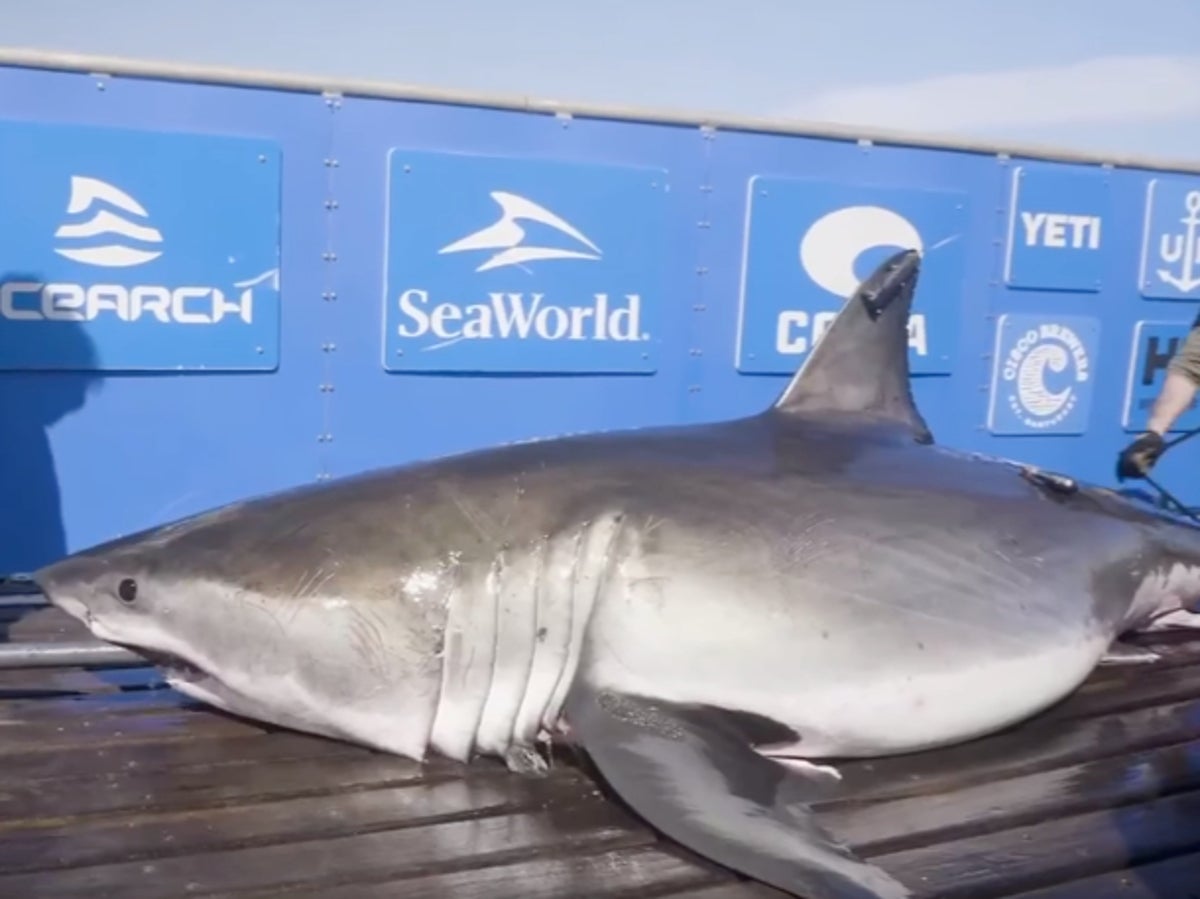
As many as seven great white sharks are being tracked off the coast of North Carolina, with one of them weighing more than 1,400 pounds.
The largest of the group monitored off the Outer Banks is Breton, a 13-foot, 3-inch-long shark named and tracked by the non-profit OCEARCH weighing in at 1,437 pounds (652kg).
OCEARCH said on Monday that the tracker for Breton had pinged off the coast of Hatteras on the Outer Banks. The group noted that a number of juvenile sharks have been recorded in the same area as of late.
“Many of our animals use the productive continental shelf waters around the Outer Banks, NC as a spring staging area before making their migration north for their summer residency,” the non-profit wrote on social media.
Breton is named for where he was tagged in 2020, Cape Breton off the coast of Nova Scotia. Since his tagging, the shark has journeyed the length of the US East Coast. Great white sharks swim all the way from Canada to the Gulf of Mexico and the Caribbean, the National Oceanic and Atmospheric Administration states.
Great white sharks can become up to 21 feet long and weigh as much as 4,500 pounds (2,041 kg).
“Breton is visiting the Outer Banks! He pinged in this weekend off Hatteras, NC. This mature male white shark is joined by many of our juvenile sharks who have spent the last few weeks in the same region. This is also the area we plan to be at next month during Expedition Northbound,” OCEARCH wrote on Facebook this week.
The sharks off the coast of North Carolina range in size from the size of Breton on the larger end, all the way down to the seven-foot shark Martha weighing in at 188 pounds.

The group of sharks can be found along about 250 miles of coast, from Pea Island to Carolina Beach, OCEARCH’s tracker shows.
The heavy shark presence coincides with spring break for many colleges around the US. The sharks are tracked using satellite tags attached to their fins by OCEARCH.
The barrier islands off the coast of North Carolina are thought to be an area serving as a gathering and mating area for great white sharks.
Currents going north and south collide in those waters, bringing prey, OCEARCH said previously.

A paper released by the nonprofit late last year shows that “this population of white sharks makes predictable annual migrations between the northern and southern parts of their range, which stretches from Newfoundland to the eastern Gulf of Mexico,” OCEARCH said in a December statement. “The sharks spend summer and fall primarily in coastal waters off New England and Atlantic Canada, feeding on high-calorie prey such as seals, before heading back south to warmer winter waters off the southeast U.S. from South Carolina to the Gulf of Mexico.”
“White sharks demonstrate strong site fidelity, with individuals returning to the same location in multiple years, suggesting these animals use complex navigational cues to migrate over thousands of miles every year,” the group added.







